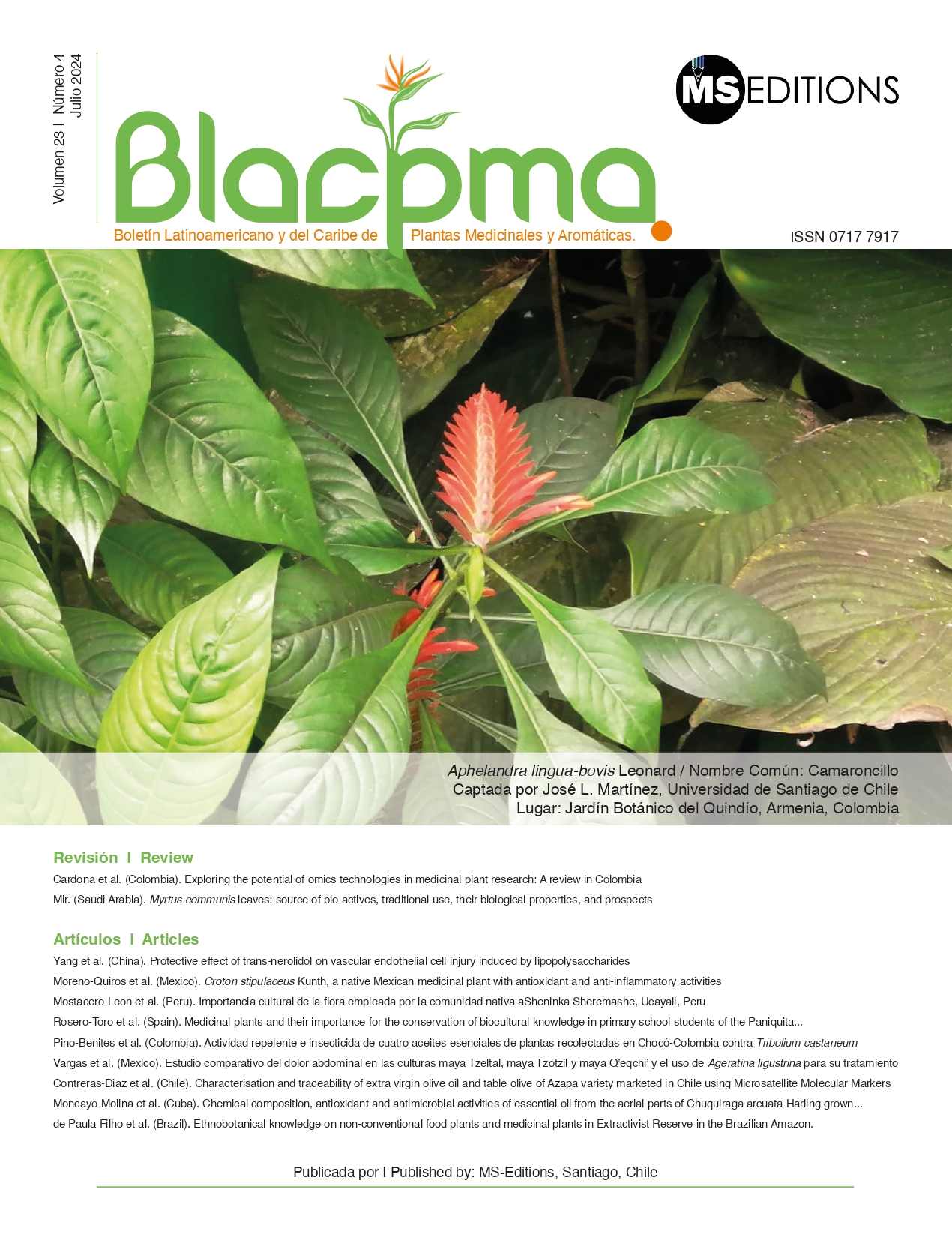Ethnobotanical knowledge on non-conventional food plants and medicinal plants in Extractivist Reserve in the Brazilian Amazon
DOI:
https://doi.org/10.37360/blacpma.24.23.4.42Keywords:
Ethnobotany, Food safety, Homemade medicine, Traditional populations, Natural resourcesAbstract
Information on the knowledge and ways of using food and medicinal plants by traditional populations, family farmers and Brazilian native population in the Amazon is essential to guarantee the food sovereignty of these groups. This study was conducted using semi-structured interviews applied to local respondents. A total of 269 species of both non-conventional food plants and medicinal plants were identified, distributed in 83 botanical families and 198 genera. The Arecaceae and Lamiaceae families had the highest species richness (11 and 7, respectively). The Shannon-Wiener (H’) and Pielou (J’) diversity
indices were considered high (5.02 and 0.9, respectively) when compared to other ethnobotanical works. In the environment in which these families are found, these species become the only food and medicinal resources available.
Downloads
Downloads
Published
How to Cite
Issue
Section
License

This work is licensed under a Creative Commons Attribution-NonCommercial-NoDerivatives 4.0 International License.

